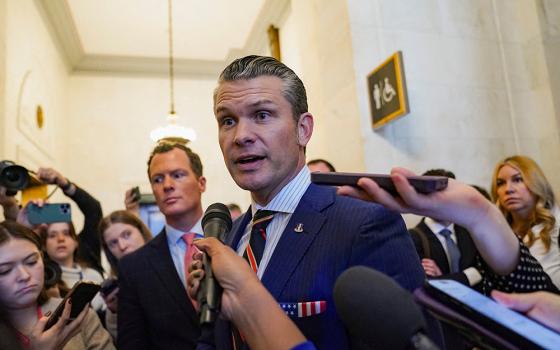
It is a safe bet that a month ago few outside of Australia would have been able to identify Toowoomba as both a city and diocese in that country.
Probably fewer still would have been able to identify William Morris as the bishop of that diocese. But the issues and procedures that led to his forced retirement have been taken up by theologians, ecclesiologists, canonists, commentators and interested Catholics well beyond Australia. The questions swirling in the aftermath of the Vatican’s action against Morris deal with everything from the role of the bishop, to what topics are permissible for wide discussion, how the church plans for a future with fewer and fewer priests, and what, precisely, makes a teaching infallible.
In the weeks since he was sacked, Morris has received an outpouring of support internationally as well as strongly worded statements of support from Catholic organizations of priests and sisters within his own country. Even Australia’s bishops discussed the case during a recent meeting and announced they would raise questions about the Vatican process and its result with church officials during the bishops’ ad limina visits to Rome later this year.
The Toowoomba diocese is immense geographically -- 188,279 square miles, according to Catholic-Hierarchy.org, a Web site that maintains data on the church worldwide. As Morris recently described it, all of Germany would fit inside the diocese. (By comparison, the New York archdiocese is 4,683 square miles.)
Its population, however, is tiny -- 232,900 -- and scattered in small pockets throughout the region. Its Catholic population is even tinier. In 2004, for instance, there were 35 parishes and 42 priests serving a total Catholic population of around 66,000, according to Catholic-Hierarchy.org.
Morris’ supporters describe him as a bishop who takes a highly consultative approach to leadership, occasionally surveying church members to learn their opinions on various topics, and consulting with members of parishes before appointing a new pastor. They were tactics that apparently annoyed both Rome and what is described as a small group of conservative church members who regularly reported Morris’ actions to Vatican officials.
Concerned with the growing priest shortage as well as the aging of the priests in the diocese, Morris, in a 2006 Advent pastoral letter, raised both ordination of women and recognition of other denominations’ ordinations as among topics that were being discussed throughout the church as solutions to the priest shortage.
He has maintained that he was not advocating those measures, merely listing them as topics for discussion.
The letter was apparently a final straw that led to a Vatican investigation conducted by U.S. Archbishop Charles Chaput of Denver, who visited the diocese and produced a written report for the Vatican that Morris has never seen.
Eventually, as any hope of “negotiating” his retirement with Rome broke down, Morris received a personal letter from Pope Benedict XVI, in which the pope claimed that his predecessor, John Paul II, had infallibly declared the ban on women priests.
In the week following the announcement of the forced retirement, hundreds of Catholics gathered in the rain near St. Patrick’s Cathedral in Toowoomba to show their support for Morris. The National Council of Priests of Australia issued a statement saying the organization was “embarrassed about the shabby treatment meted out to an outstanding pastor of this diocese.” The group also said it was “appalled” at the lack of transparency and due process.
Catholic Religious Australia, which represents more than 180 congregations of sisters, brothers and priests in Australia, also issued a statement saying its members “are especially distressed at the loss of their pastor, a man they believe to be solicitous of all Christ’s faithful entrusted to his care -- especially the needy and marginalized.”
The group raised three questions in the statement:
- “How can all in our church be heard and empowered by our ecclesiastical leaders and processes when private and confidential opinions are given such importance?”
- “How is the decreasing availability of the Eucharist, ‘the source and summit of our lives,’ to be addressed into the future?”
- “What do we say to the people who have lost an inspirational shepherd and pastor at a time when the people most need him?”
[Tom Roberts is NCR editor at large. His e-mail address is troberts@ncronline.org.]




